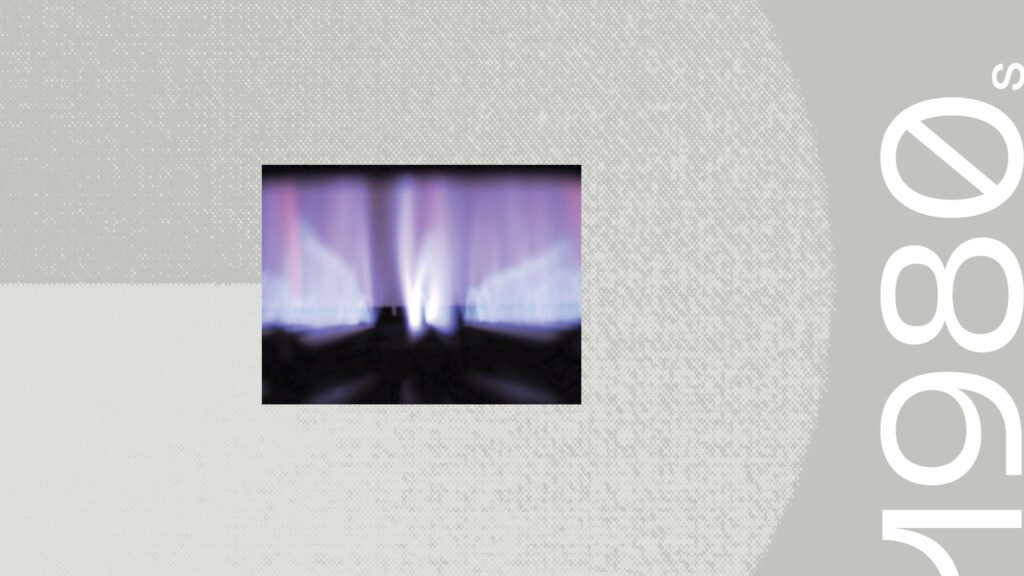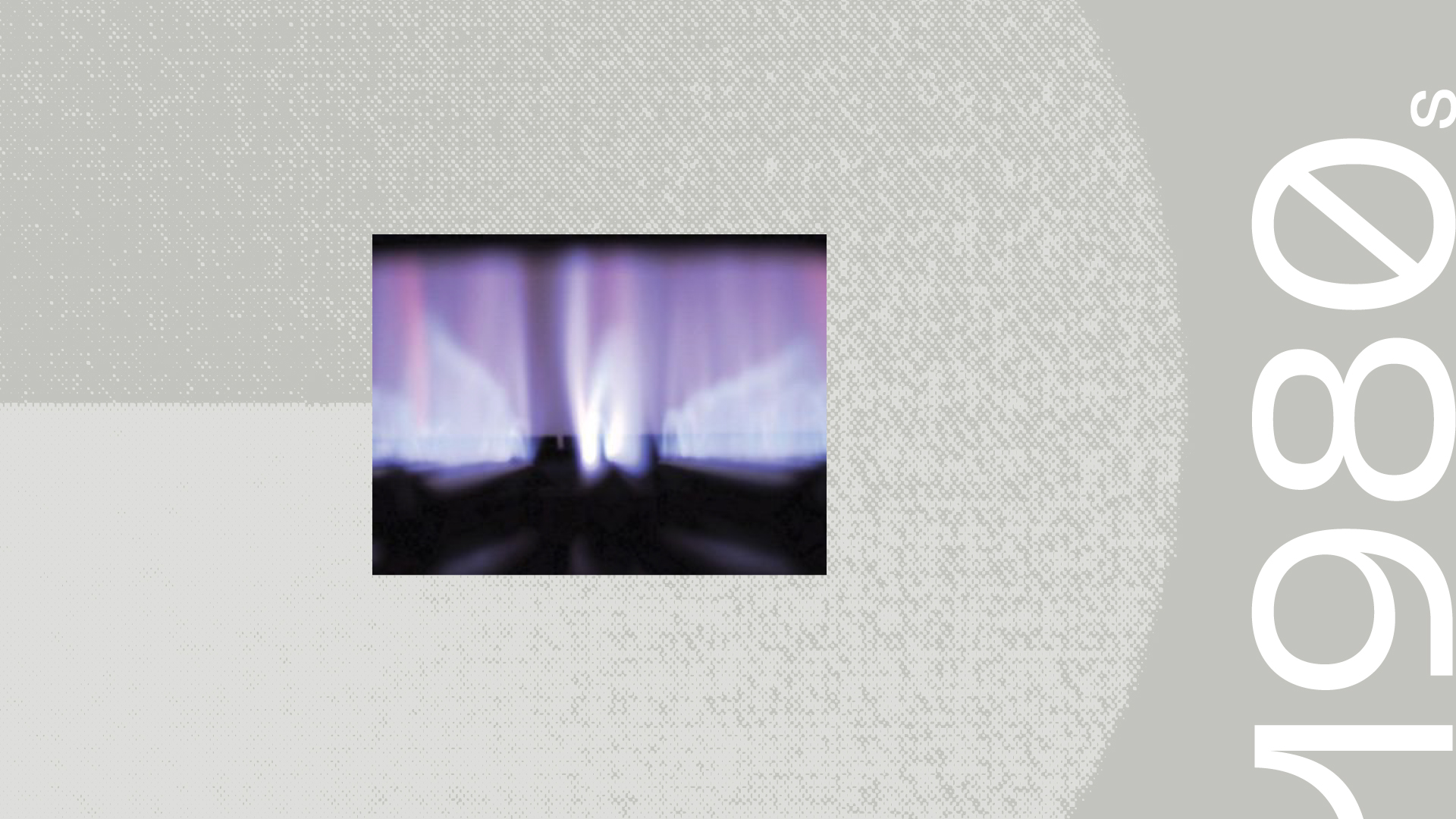
Laser-induced fluorescence (LIF) is a spectroscopic method used for studying the structure of molecules, detecting selective species, and visualizing and measuring flow. SRI developed two-dimensional LIF, today used worldwide to visualize flow and chemical processes in combustion.
SRI’s method for obtaining a two-dimensional LIF image of a naturally occurring flame radical was first described in 1982. A tunable laser beam was focused by a cylindrical lens into a sheet that passed through the flame, exciting the oxygen/hydrogen (OH) lying within the plane defined by the laser. The fluorescence at right angles was imaged onto an intensified vidicon (small TV camera tube), forming a map of the ground-state OH concentration within the flame.
Read our 75th anniversary blog feature
75 years of innovation: Two-dimensional laser-induced fluorescence spectroscopy



